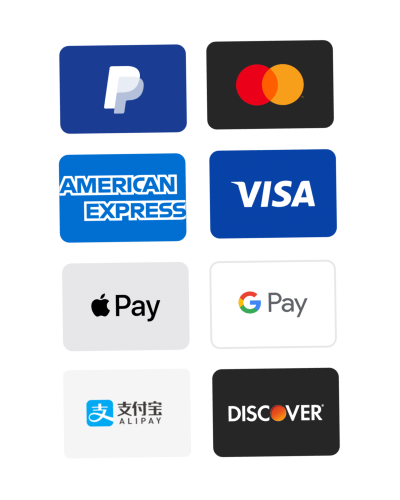I am replying to a classmate’s post on opioid use disorder video
Week 11 Discussion 1: Opioid Use
Done: Make forum posts: 1
Value: 100 points
Due: Create your initial post by Day 4, and reply to at least two of your classmates’ posts by Day 7.
Grading Category: Discussion Forums
Initial Post
- View the Opioid Use Disorders Video | Opioid Use Disorder Moderate Transcript
- Answer the following questions:
- Your initial post should be in APA format with evidence-based references to support your statements.
Reply Posts
Read your peers’ posts and respond to at least two of your peers. In your posts, critique the plan by answering the following questions:
- Does the clinical decision and treatment plan follow guidelines? Why or Why not?
- Is anything missing from the plan?
- Compare your peer’s plan to yours. What are the advantages and disadvantages of each?
- Your response should include evidence of review of the course material through proper citations using the APA format.
Please refer to the Grading Rubric for details on how this activity will be graded.
I am repling to my peer’s post.
This is her post
Re: Week 11: Discussion 1: Opioid Use
by Bhagyshree Brahmbhatt – Wednesday, 15 March 2023, 2:41 PM
Patient mainly wants to talk more about Percocet’s and does not want to talk about his symptoms or problems. Based on the conversation, it seems like the patient takes many pills (Dugosh & Cacciola, 2022) since he said he takes Ambien, Oxycontin, and his wife’s medication, Klonopin. When he goes on his trip to Sturgis, he gets carried away with drugs. Patient also seems like he has become tolerant (Dugosh & Cacciola, 2022) to his previous oxycontin dose because since his doctor reduced the dose a few weeks ago, he started taking his wife’s medication to help. He also mentioned he had symptoms of chest tightness, sweating and he was out of breath, which were consist of a panic attack two weeks ago. This may have been precipitated due to withdrawal from opiates (Roy-Byrne, 2022). Patient also states he has many other health issues, so I would need more information about that to assist with treatment and any drug interactions to be concerned about. It would be best to look get medical records and look into the prescription drug monitoring program (PDMP). All signs and symptoms point to substance use disorder.
For treatment, I would prescribe him both pharmacotherapy and psychotherapy. MOUDs work by reducing withdrawal symptoms and opioid cravings while decreasing the biological response to future drug use (Hoffman et al., 2019). I would prescribe him transmucosal buprenorphine (Strain, 2022). He will need to be abstinent from other opioids for a period of time so he can be in a state of mild withdrawal (Strain, 2022). Medication will be inducted when he is manifesting symptoms of withdrawal and will happen in office, so we are able to observe the patient for a full two hours for relief of symptoms and any symptoms of withdrawal (Strain, 2022). If patient continues to show signs of withdrawal, we can increase the dose up to 4 mg (Strain, 2022). The next day, we will give the same dose given the first day and monitor again for one to two hours. If symptoms continue, we can give another 4 mg and monitor and continue to increase and monitor up to a maximum of 16 mg if symptoms persist (Strain, 2022). When the symptoms have gone down, we will provide the patient with maintenance doses for one week and follow up with them to assess. The dose of the medication will be dependent on his symptoms. Transmucosal buprenorphine improves treatment retention, reduces opioid use, and is associated with decreased mortality in individuals with OUD (Strain, 2022). It seems as though patient is not aware of his substance use disorder, so I would explain it to him in detail and also have him do cognitive behavioral therapy since it will help him develop an awareness of his cognitive distortions that negatively impact his mood and likelihood of relapse and help him better understand the function of their substance use, including factors precipitating use (Peavy, 2021).
References
Dugosh, K. L., & Cacciola, J. S. (2022). Clinical Assessment of Substance Use Disorders. UpToDate. https://www.uptodate.com/contents/clinical-assessment-of-substance-use-disorders?search=substance%20abuse%20disorder&source=search_result&selectedTitle=1~150&usage_type=default&display_rank=1#H4135196361
Hoffman, K. A., Ponce Terashima, J., & McCarty, D. (2019). Opioid Use Disorder and Treatment: Challenges and Opportunities. BMC Health Services Research, 19(1). https://doi.org/10.1186/s12913-019-4751-4
Peavy, K. M. (2021). Psychosocial Interventions for Opioid Use Disorder. UpToDate. https://www.uptodate.com/contents/psychosocial-interventions-for-opioid-use-disorder?sectionName=SELECTING%20PSYCHOTHERAPY&topicRef=108803&anchor=H2606067275&source=see_link#H2606067275
Roy-Byrne, P. R. (2022). Panic disorder in Adults: Epidemiology, Clinical Manifestations, and Diagnosis. UpToDate. https://www.uptodate.com/contents/panic-disorder-in-adults-epidemiology-clinical-manifestations-and-diagnosis?search=panic%20attack%20treatment&source=search_result&selectedTitle=2~150&usage_type=default&display_rank=2#H2742048403
Strain, E. (2022). Medication for Opioid Use Disorder. UpToDate. https://www.uptodate.com/contents/medication-for-opioid-use-disorder#H3807189453

